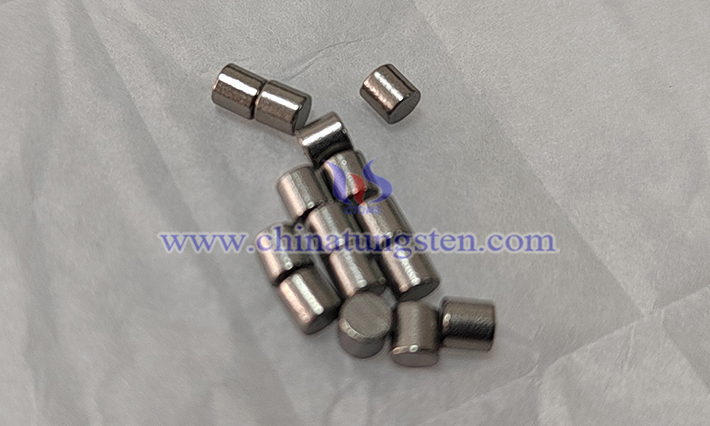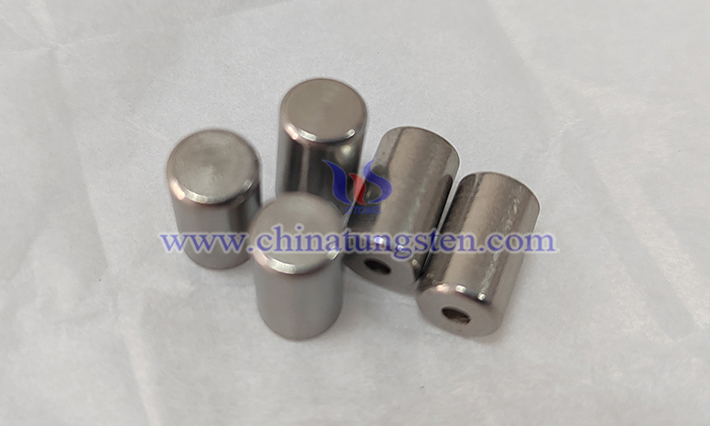Factors Affecting the Pulse Discharge Performance of Barium Tungsten Electrode
- Details
- Category: Tungsten Information
- Published on Tuesday, 03 June 2025 17:54
The pulse discharge performance of barium tungsten electrode is affected by the comprehensive effect of multiple influencing factors such as material composition, microstructure, preparation process, working parameters and environmental conditions.
I. Material Composition and Doping Elements
1. Barium Content and Barium Compounds
The low work function of barium (about 2.1 eV) significantly reduces the electron emission energy and is the key to improving pulse discharge performance. Barium oxide (BaO) impregnation can optimize electrode performance, including reducing ignition voltage, improving luminous efficiency and extending life.
2. Rare Earth Element Doping
Rare earth elements change the surface electron cloud distribution to form an adsorption dipole layer, further reducing the work function. Doping with rare earth oxides such as CeO₂ and Sc₂O₃ can enhance pulse emission capability.
3. Addition of Rhenium Element
Rhenium doping can improve the emission stability and life of tungsten-rhenium-based barium tungsten cathode.

II. Material Microstructure
1. Matrix Porosity
The matrix prepared by spherical tungsten powder has uniform pore size distribution, good internal pore connectivity, improved slope of space charge limitation zone, and good emission uniformity.
2. Grain Size and Phase Composition
Narrow particle size tungsten powder combined with discharge plasma sintering can obtain a matrix with narrow pore size distribution, reduce closed-pore defects, and improve mechanical strength and conductivity.
III. Preparation Process
1. Sintering and Heat Treatment
Temperature Control: Sintering temperature affects the density and conductivity of tungsten matrix.
Impregnation Process: The impregnation and coating process of aluminate directly affects the cathode emission performance.
2. Doping Uniformity
The uniformity of the material composition including the doping element is crucial, and the performance fluctuation caused by excessive local concentration.
IV. Pulse Discharge Parameters
1. Pulse Width and Frequency
Matching Optimization: The pulse discharge parameters need to match the electrode structure to avoid overheating.
Electric Field Effect: The enhanced electric field can reduce the electron work function through the Schottky effect, but excessive electric field may cause local breakdown.
2. Relationship Between Voltage and Current
Space Charge Limitation Area: The current is proportional to the square/third power of the voltage. The voltage in this area is the main limiting factor.
Temperature Limitation Area: After the voltage continues to increase, the current is controlled by the temperature. The voltage and temperature rise need to be balanced to avoid performance degradation.

V. Environmental Factors
1. Working Temperature
Double-Edged Sword Effect: The increase in temperature promotes the diffusion of barium atoms and improves the emission performance, but too high a temperature will accelerate the evaporation of active substances and shorten the life. The optimal working temperature needs to be determined experimentally.
2. Atmosphere and Vacuum
Oxidation Protection: The electrode must be used in a vacuum or inert gas environment. Air exposure will cause the formation of a surface oxide layer, which will reduce the emission current density by more than 50%.
Chemical Stability: In active gases such as metal halides, a tungsten substrate with strong corrosion resistance needs to be selected.
VI. Electrode Geometry
1. Electrode Spacing
Electric Field Distribution: Reducing the spacing will increase the electric field strength, but it is necessary to avoid abnormal discharge caused by excessive field strength.
Thermal Management: Compact design requires supporting heat dissipation measures to prevent local overheating.
2. Electrode Diameter and Shape
Current Density Distribution: Specific shapes (such as cones) can optimize the uniformity of electron emission and reduce the risk of tip discharge.
Mechanical strength: Impregnated barium tungsten electrodes need to avoid mechanical damage to prevent structural damage and performance degradation.
VII. Other Challenges and Optimization Directions
1. Electrode Aging and Sputtering
Life Limit: Long-term high current operation will cause cathode surface loss, and material modification (such as adding anti-sputtering coating) is required to extend the life.
Regeneration Technology: Hydrogen burning can be used to restore the performance of oxidized or contaminated electrodes.
2. Hazardous Substance Management
Environmental Requirements: Barium vapor release must be controlled by sealing design and exhaust gas treatment system, and comply with RoHS and other environmental standards.
- Chinatungsten Online: www.tungsten.com.cn
- CTIA GROUP LTD: en.ctia.group
- Tungsten News & Price: www.ctia.com.cn
- Molybdenum News & Price: news.molybdenum.com.cn
- Tel.: 86 592 5129696; Email: sales@chinatungsten.com



 sales@chinatungsten.com
sales@chinatungsten.com